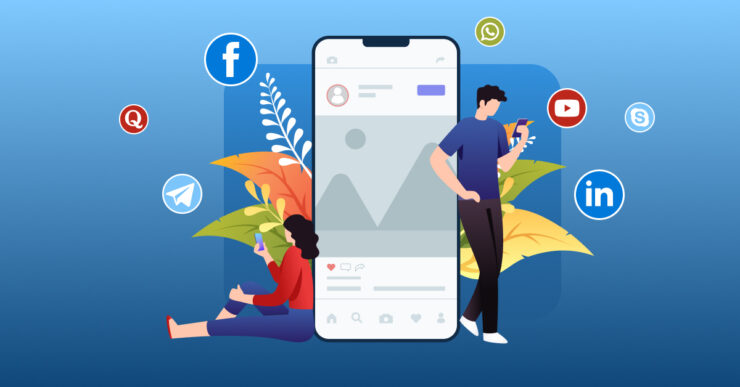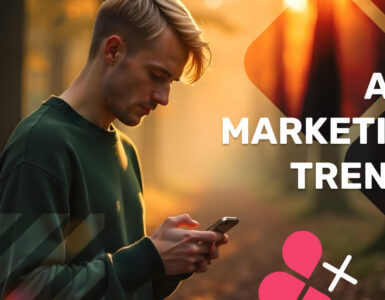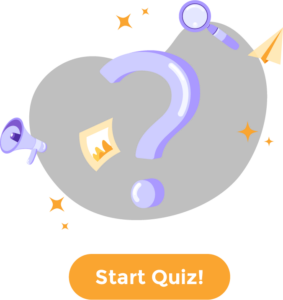As the number of apps in the app stores continues to grow, it has become more difficult for app developers and ASO managers to stand out from the crowd. Promoting an app on social media can be an effective way to increase visibility and reach potential users. Today, social networks have established themselves as the most successful way to promote mobile applications. Social media platforms have a vast audience and can offer a range of features and strategies for app promotion. In this article, we will explore the different social media platforms and their audiences, as well as various strategies and paid advertising options that can help app developers and ASO managers promote their app.
- Why should ASO managers and app developers use social networks for app promotion?
- Review of Different social network audience and their features
- What ad strategies can you use on platforms?
- Influencer Marketing
- User-Generated Content
- Social Media Contests
- #Hashtags
- Paid advertising
- What to consider when promoting
Why should ASO managers and app developers use social networks for app promotion?
According to the IAS Industry Report, a whopping 91% of media experts plan to advertise on at least one social media platform this year. ASO managers and app developers should promote their apps on social media for several reasons:
- Increased Visibility: Social media platforms have millions of active users, and promoting an app on these platforms can increase its visibility. By leveraging social media, you can reach a broader audience and increase the app’s discoverability.
- Targeted Marketing: Social media platforms offer advanced targeting options that allow you to reach specific audiences based on demographics, interests, behaviors, and more. This allows you to focus their marketing efforts on users who are more likely to be interested in the app.
- User Engagement: Social media platforms offer various engagement tools, such as likes, shares, and comments, that allow you to interact with potential users. This can help build a community around the app and increase engagement with potential users.
- User Feedback: Social media platforms also offer a channel for users to provide feedback on the app. You can use social media to gather feedback from users, address their concerns, and improve the app’s overall user experience.
- Cost-Effective: Social media platforms offer various advertising options, including both free and paid options, making it a cost-effective way to promote the app. Even if you choose to use paid advertising, social media advertising can often be more cost-effective than other advertising channels.
Promoting an app on social media can increase its visibility, allow for targeted marketing, increase user engagement, provide a channel for user feedback, and be cost-effective. Therefore, you should consider social media as a crucial part of their overall app promotion strategy.
Review of Different social network audience and their features
Different Platforms and Their Audiences:
1. Facebook: With over 2.7 billion monthly active users, Facebook is the largest social media platform. Its users range from teenagers to seniors and from all over the world.
Example of application pages in Facebook
Facebook offers various advertising options such as such feeds, stories and reels, In-stream ads, search results, messages, in articles and Apps and sites (ads in external apps and websites). We recommend you only feed placement, like more conversion placement, and add another one if you need more awareness.
These advertising options allow you to target specific audiences based on demographics, interests, and behaviors. For example, for a game app, you can choose “mobile game” interest, for a dating app, relationship status “single” to attract more target users who really need your app.
Examples of Facebook targeting
2. Instagram: Instagram has over 2 billion monthly active users and is popular among millennials and Gen Z users. It is a visually-oriented platform, making it perfect for promoting apps that have a strong visual component or need a specific target audience such as gaming, dating app and app in beauty niche. Instagram offers various advertising options such as photo ads, video ads, carousel ads, and Instagram Stories ads. You can target specific audiences based on demographics, interests, behaviors, and even specific hashtags.
Example of application pages in Instagram
Facebook and Instagram have the same ad platform (targeting), so launch ads you can from the same Ads manager. Just choose Instagram as a placement option.

3. Twitter: Twitter has over 450 million monthly active users and is popular among young adults. It is a text-based platform, making it ideal for promoting apps that have a strong messaging or communication component such Signal, Discord, Zoom or other messengers.
Twitter Discord and Viber pages
Twitter offers various advertising options, such as promoted tweets (engagement), promoted accounts (get more followers), and promoted website.
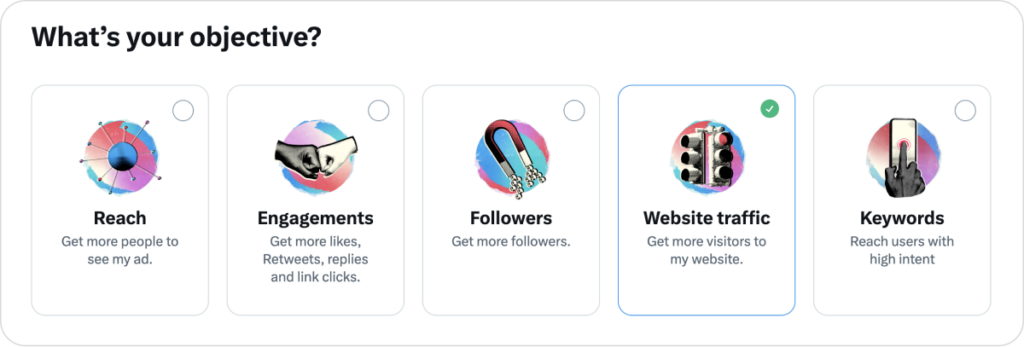
These advertising options allow you to target specific audiences based on demographics, geos, interests (such as “mobile gaming”), and behaviors.
Examples of Twitter targeting
4. LinkedIn: LinkedIn has over 900 million members and is popular among professionals and businesses. It is a platform that is ideal for promoting business-related apps or apps that target a professional audience such as Dropbox, Trello and Hootsuite. LinkedIn offers various advertising options such as sponsored content, sponsored InMail, and display ads.
Linkedin Dropbox and Asana pages
You can target specific audiences based on job titles, company size, industry, and skills.
Examples of Linkedin targeting
5. YouTube: With over 2,5 billion monthly active users, YouTube is one of the largest social media platforms. YouTube is a video-sharing platform, making it ideal for promoting apps that have a strong visual component. You can create promotional videos for the app and upload them to YouTube. Additionally, you can partner with YouTube influencers to create sponsored content that promotes the app.
YouTube offers various advertising options, such as skippable and nonskippable in-stream ads, video discovery ads, and bumper ads, that allow you to reach specific audiences based on demographics, geography, parental status, interests, and behaviors. You can launch Youtube ads from your Google Ads account (don’t forget to connect them before).
For better app promotion, you can choose where you want your ads to show. Narrow your reach with Keywords, Topics, or Placements
6. TikTok: has over 1,5 billion monthly active users and is popular among Gen Z users. TikTok is a short-form video-sharing platform, making it ideal for promoting apps that have a visually engaging and fun component. You can create short videos that showcase the app’s features and upload them to TikTok. Additionally, you can partner with TikTok influencers to create sponsored content that promotes the app. TikTok offers various advertising options, such as in-feed ads, branded effects, and brand takeovers, that allow you to reach specific audiences based on demographics, interests, and behaviors.
Ticktok Candycrushsaga and Vsco pages
7. Pinterest: has over 459 million monthly active users and is popular among women. Pinterest is a visual discovery platform, making it ideal for promoting apps that have a strong visual component. ASO managers can create pins that showcase the app’s features and upload them to Pinterest. Additionally, ASO managers can partner with Pinterest influencers to create sponsored content that promotes the app. Pinterest offers various advertising options, such as promoted pins, promoted carousels, and promoted video pins, that allow ASO managers to reach specific audiences based on demographics, interests, and behaviors.
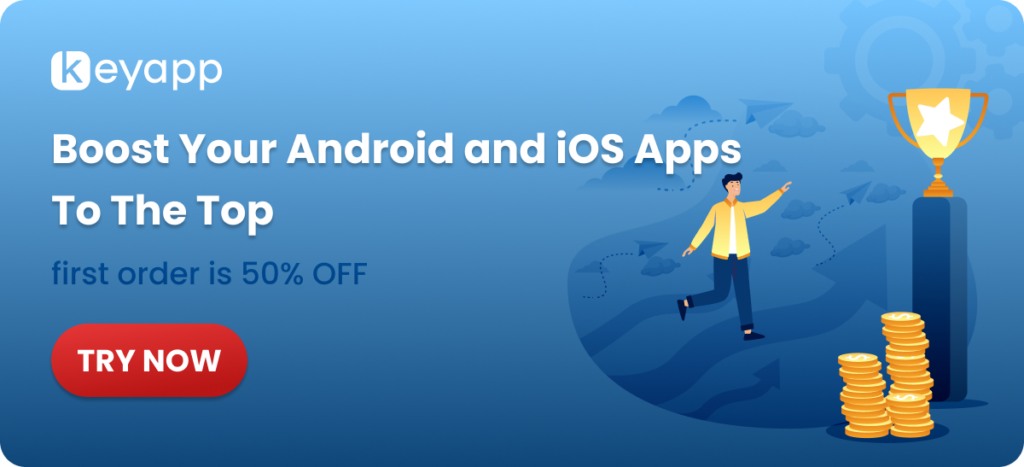
What ad strategies can you use on platforms?
Different Strategies on Platforms for App Promotion:
Influencer Marketing
Influencer marketing involves partnering with social media influencers who have a large following on a particular platform. Influencers can help app developers and managers reach a new audience by promoting the app to their followers. This strategy can be particularly effective on platforms like Instagram, YouTube, and TikTok, where influencers have a significant impact on their followers’ purchasing decisions. First of all, find influencers who have the target audience among their followers, which will download and use your app.
Ways of cooperation and app promotion:
- Sponsored blog posts or videos. Ask influencers to create detailed review videos playing your app highlighting its features and benefits, and including a call-to-action to download and play the game. Don’t forget to use promo codes or referral link to track all conversions. They can name the videos accordingly and use hashtags in the title to make them easily searchable.
- Giveaways and contests. You can collaborate with gaming bloggers and influencers to host giveaways and contests that encourage their followers to download and play your gaming application, with prizes such as in-game currency, merchandise, or even real-world rewards.
- Affiliate marketing. You can offer gaming bloggers and influencers a commission for every new user who downloads and installs your gaming application using their unique referral link.
User-Generated Content
User-generated content involves encouraging users to create and share content related to the app in social networks. This content can include reviews, testimonials, and social media posts. User-generated content can help build trust and credibility for the app among potential users. Let your audience know what they’ll get in return when they leave a review or review. This strategy can be particularly effective on platforms like Instagram, Facebook, YouTube, and TikTok, where users can create different kinds of content depending on their desires.
From www.facebook.com/Lingokids page
Social Media Contests
Social media contests involve running a contest on social media that encourages users to engage with the app or share the app with their friends. This strategy can help increase visibility and reach for the app while also incentivizing users to download and use the app.
#Hashtags
Hashtags are not only simple and easy to use, but they are also a crucial component of the internet and are extensively used on nearly all social media platforms. Whether you’re on Twitter or Instagram, hashtags are omnipresent in your social media feeds. They offer a rapid and efficient way to enhance the visibility of your content to relevant audiences, allowing them to engage with it. For instance, if your content or mobile app is related to a particular lifestyle category, you can quickly select #lifestyle and share your content with your social media accounts to ensure that it reaches the appropriate audience.
Paid advertising
Paid advertising on social media platforms can help app developers and ASO managers reach a larger audience and target specific users based on demographics, interests, and behaviors. Paid advertising options vary by platform and can include sponsored posts, video ads, carousel ads, and more. It is essential to set clear goals and budgets when using paid advertising on social media to ensure the best return on investment.
We prepared a step by step guide with more app promotion marketing ideas for you.
What you should consider when promoting app
- Don’t forget to implement the tracking and attribution tool. This must be done before launch, otherwise, you will not understand which channel brings conversions. Popular analysis tools include AppsFlyer, Adjust, Kochava, and Branch.
- Calculate everything and rely on the media plan. The analysis will allow you to predict how much one new user will cost. Based on this, you can build a media plan with clear costs and stick to it.
- Start with a minimum budget for testing. For example, spend $100-150 on each channel and see which one brings in the most conversions during the week.
- Remember that downloading the application by the user is only part of the success story. Often, users delete it after a few minutes of use or do not open it at all. Therefore, it is important to maintain user loyalty with regular updates, promotions and promotions (you can report them in push notifications), and quality work with reviews, especially negative ones. We wrote before article about how to work with mobile app reviews
Sum up
In conclusion, social media can be a powerful tool for app promotion. App developers and ASO managers should consider the different social media platforms and their audiences, as well as various strategies and paid advertising options, when promoting their app. With the right approach, social media can help increase visibility, reach potential users, and ultimately drive downloads for the app.
Social networks are constantly introducing new advertising formats – you should follow the updates. Also, don’t forget about keyword promotion. Together, you will achieve greater results.

